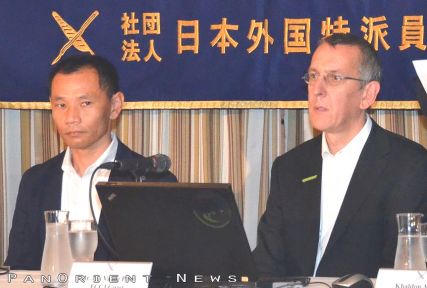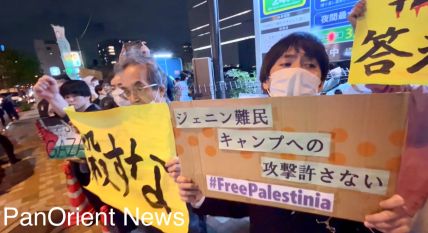|
|
Environment
Greenpeace Exposes ``Failure`` of Fukushima Decontamination Program
Tuesday, July 21, 2015

Tokyo- (PanOrient News) Radioactive contamination in Fukushima prefecture is so widespread and at such a high level that it will be dangerous for people to return to their homes, a Greenpeace Japan investigation revealed today. The investigation followed the Abe Government’s announcement on 12th June 2015 to lift evacuation orders by March 2017 and end compensation by 2018, which forces victims back into heavily contaminated areas.
“Prime Minister Abe would like the people of Japan to believe that they are decontaminating vast areas of Fukushima to levels safe enough for people to live in. The reality is that this is a policy doomed to failure. The vast stock of radioactivity will remain both a direct hazard and source of potential recontamination for hundreds of years. It’s impossible to decontaminate,” said Jan Vande Putte, radiation specialist with Greenpeace Belgium.
“The Japanese government has condemned residents of Fukushima to live in an environment that poses an unacceptable risk to their health. Stripping nuclear victims of their already inadequate compensation, which may force them to return to unsafe, highly radioactive areas for financial reasons, amounts to economic coercion. Let’s be clear: this is a political decision by the Abe Government, not one based on science, data, or public health,” he said.
Greenpeace conducted a radiation survey and sampling program in the prefecture, including the forests. One principle finding from the investigation is that the vast majority of the affected areas will never be decontaminated with most radioactivity deposited in the vast forested hills and mountains in the district. The enormous scale was revealed by UAV footage from the investigation. The results show that current contamination remains high and unsafe for habitation.
Radiation dose rates were measured higher than 2uSv/h on decontaminated fields, the equivalent of an annual dose higher than 10mSv/year or ten times the maximum allowed dose to the general public. In the untouched and heavily contaminated forests, radiation dose rates are typically in the range of 1-3uSv/h - high levels that will remain for many years to come. The only forest decontamination underway is along public roads, where thousands of workers are removing contaminated soil and plants along a 10-20 meter strip. Lifting restrictions would expose people to radiation doses of up to 20mSV each year and in subsequent years.
International radiation protection standards recommend public exposure should be 1mSv/year or less in non-post accident situations. The radiation limit that excluded people from living in the 30km zone around the Chernobyl nuclear plant exclusion zone was set at 5mSV/year, five years after the nuclear accident. Over 100.000 people were evacuated from within the zone and will never return.
The International Atomic Energy Agency (IAEA) is supporting the Japanese government in promoting the early return of Fukushima citizens to evacuated areas. The IAEA's radiation risk assessment is based on flawed science and deliberately understates the risks from radioactivity.
“Even after nearly thirty years, the 30km area around Chernobyl remains an exclusion zone. It’s a shocking indictment of both the IAEA and the Abe government, which reveals how desperate they are to create the illusion that returning to 'normal' is possible after a severe nuclear accident. Their position is indefensible and plans for a de facto forced return must be stopped,” said Mamoru Sekiguchi, energy campaigner at Greenpeace Japan.
The highly contaminated area following March 2011 catastrophe covers more than 200 square kilometers, located between 28-47km northwest of the Fukushima Daiichi Nuclear Power Plant. Since 2014, tens of thousands of workers have been attempting to reduce radiation levels with little impact.
In early June more than half the population of the contaminated area called on the mayor of their community to reject the government’s plans. At the same time, they are currently within the Alternative Dispute Resolution (ADR) process, where they hope to secure reasonable compensation for the losses they have suffered.
“The gap between the amount of high and low compensation payments is widening drastically, and the Iitate village people will have to keep living a sad life in bitterness, separated from each other and away from their home. The Iitate people’s fate is another of numerous cases in the past where Japan abandoned its people, as with the Ashio mining pollution and Minamata disease. We can not allow this to happen again,” said Yasushi Tadano, the lawyer defending the people of Iitate.
PanOrient News
© PanOrient News All Rights Reserved.
|
|

